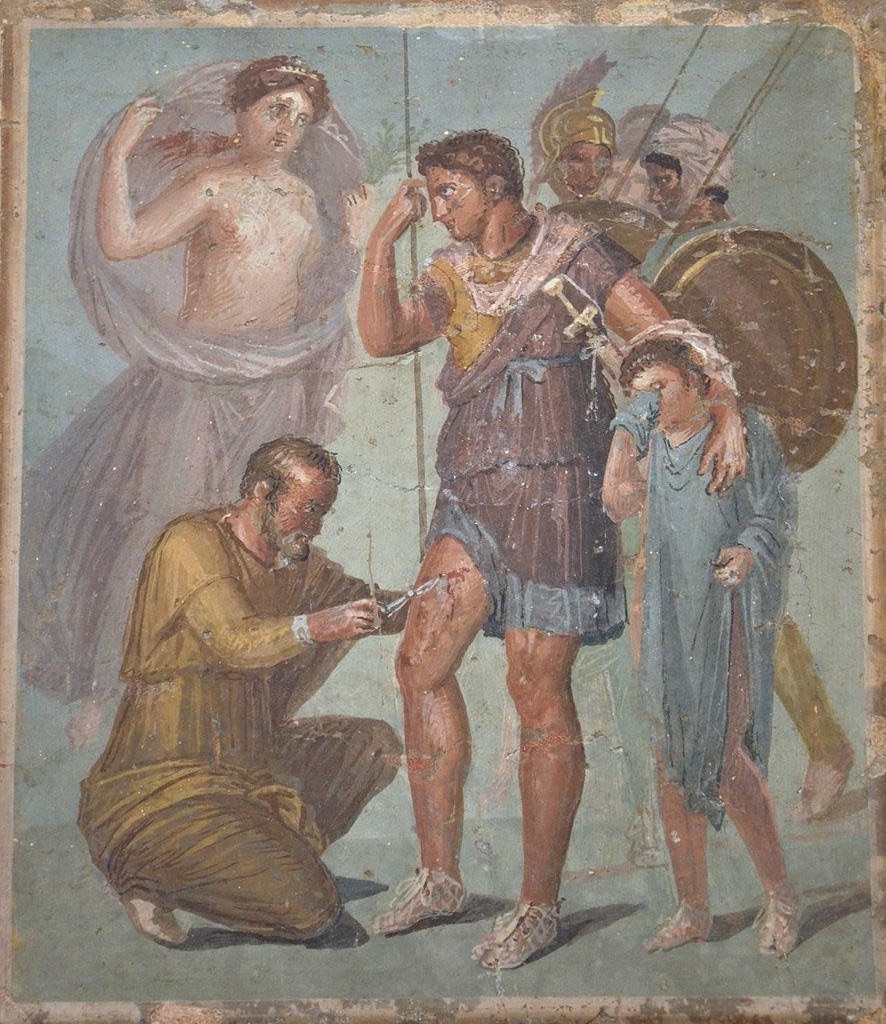Imagine this: you’re sent 2,000 years back in time to Ancient Rome. You’ve got one day to mentally prepare, and all you’re allowed to bring is a pen and a blank sheet of paper. No phones, no textbooks, no internet, just your memory and whatever knowledge you can scribble down once you arrive.
Your mission? Accelerate humanity’s progress by centuries, maybe even millennia.
Let’s say you wake up dressed in traditional Roman clothing and, for the sake of the scenario, you speak perfect Latin. What’s your first move?
Step 1: Germ Theory – Advancing Medicine by Over a Thousand Years
Find the highest-ranking doctor you can access and explain germ theory.
In Ancient Rome, medical theory revolved around the balance of four “humors”: blood, phlegm, yellow bile, and black bile. Illness was treated with methods like bloodletting, vomiting, or hot/cold baths to restore balance. Herbal medicine and spiritual beliefs also played major roles, with many Romans thinking illness was punishment from the gods.

https://www.worldhistory.org/Roman_Medicine/
But they had no concept of pathogens, tiny microorganisms that cause disease. Introducing the idea of invisible agents that live on surfaces and in the air would advance epidemiology by at least 1,500 years.
You could also teach sterilization and sanitation: boiling water before drinking it, cleaning tools before surgery, and the importance of soap. While Romans did use soap for cleanliness, they didn’t know it removed bacteria. Explaining quarantine—isolating the sick to prevent spread—would be revolutionary.
If you earn the doctor’s trust, he might bring you to someone who can take these ideas further: an engineer.
Step 2: Arabic Numbers and Basic Math – A 1,000-Year Head Start
Now it gets trickier. Ancient Romans used Roman numerals which are notoriously clunky for calculations. Multiplication and division were painful without a modern numeric system.
You’d introduce the Arabic number system, developed in India around 500 CE but not adopted in Europe until around 900 CE. Just explaining zero as a placeholder would be game-changing. Showing them how “10” is made up of a “1” and a “0” opens the door to scalable, efficient math.
To make it stick, use physical examples: show how two groups of five rocks equal ten, and how you can multiply or divide them visually. If they follow, you could even introduce fractions, decimals, and algebra. That might mean scribbling down simple equations with “x” as a variable and letting them study the ideas later.
Step 3: Physics, Energy, and Gravity – The Seeds of Modern Science
With an audience of engineers and philosophers, you can now drop some rapid-fire science to plant long-term seeds.
Start with physics:
Gravity: Explain that all objects fall at the same rate due to a force pulling them downward.
Inertia: An object in motion stays in motion unless acted upon.
Energy: A person eating food converts it into motion and labor, a concept relatable to a society reliant on slave labor.
These foundational ideas would kickstart physics up to 2,000 years ahead of schedule, predating Newton by centuries.
Step 4: Early Technology Concepts – Leapfrogging Time
Now’s your chance to sprinkle in some bonus breakthroughs:
Crop Rotation: Teach them to alternate crops seasonally to improve yield and prevent famine.
Printing Press: Carve symbols into wood, apply ink, and stamp them onto paper to demonstrate mass production of text.
Optics: Explain how curved glass can magnify or zoom in, foundational knowledge for microscopes and telescopes.
All of these would be revolutionary, and potentially push certain technologies ahead by hundreds to over a thousand years.
Step 5: The Scientific Method – Your Biggest Contribution
Finally, you meet with a local Roman senator, a man who might find your ideas threatening.
Here’s where you reveal the most powerful concept of all: the scientific method.
Explain it like this:
Ask a question – “Why do people get sick after drinking this water?”
Form a hypothesis – “Maybe the water is contaminated.” Run a test – Boil it. See who gets sick.
Record results – Healthy people drank boiled water.
Draw a conclusion – The water was carrying something harmful.
This is the core of science: discovery through evidence, not opinion. Teaching this mindset could shift Rome toward a culture of innovation rather than tradition.
So Would It Work?
Probably not exactly how you imagine. The Roman Empire was deeply intertwined with religion and tradition. Many ideas, especially germ theory, would challenge their worldview and possibly get you labeled a heretic or lunatic.
Engineers would be the most open to your knowledge, while philosophers might engage in debate or skepticism. The senator would be cautious, only supporting you if your ideas promised power and empire growth.
The average Roman citizen? Likely uneducated or enslaved, with little access to this kind of learning.
Still, the ideas you planted, especially the scientific method, could survive in written form, waiting for someone else to rediscover and build upon.
Final Thoughts
Even if you don’t instantly create a futuristic society, your presence could push human progress forward by hundreds or even thousands of years.
And when you return to your comfy modern-day bed, complete with A/C, plumbing, and Wi-Fi, you’ll know you gave Rome something truly priceless: the tools to think scientifically.
Want more history-meets-science ideas like this?
Subscribe to the blog, and drop a comment if you enjoyed this article, or if I got something totally wrong. I’d love to hear your take.
